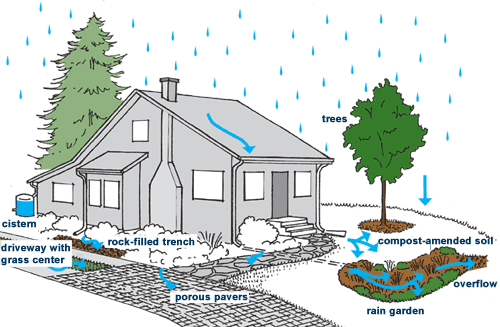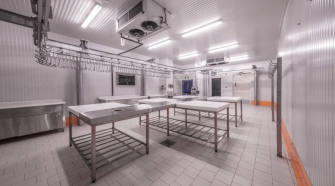Significance of water is getting clear day by day with ponds and lakes disappearing. Everyone is aware that 70% of earth’s surface is made up of water, out of which only 3% water is drinkable and rest is ice and seawater.
The palatable water is found in rivers, lakes, and underground. Only a meager fraction is available for use. A report shows that all around the world, one person out of three experiences water crisis. To resolve this water issue techniques are put into practice to collect and store water. Rainwater harvesting is an easy and reasonable way to collect water.
What is Rainwater Harvesting?
The theory of gathering, storing and utilizing rainwater from the catchment surface, before it gets to the aquifer is termed as rainwater harvesting. Rainwater harvesting method is easy to install and manage. It can be used to increase soil water level and to enhance urban greenery.
The water collected from ground is known as storm water harvesting. Sometimes areas are specially prepared for this activity. Storm water criteria needs both quality improvement and controlling the quantity of overflow.
Incorporating storm water filtration system is the best practice. It includes pre-treatment, confinement, and filtration through an integrated system. With this kind of approach, high level of pollutants is removed and erosion damage from peak flow is prevented.
Benefits of using Three-tiered Approach for Storm Water Treatment
- Water is pretreated with a screening device or hydrodynamic separator to –
- Eliminate the solids, debris and trash from overflow, even when the flow is high
- Decrease downstream loading of pollutants and oil. This helps to prevent clogging, thus cutting down system maintenance cost
- Applies underground confinement means storing of unfiltered water and discharging it overtime
- Downstream separation unit helps to slow the overflow rate and match the pre-developed flow rate
- Upstream filtration units to decrease flow rate
- Maximize underground property usage and eliminates above ground system
- Provides maximum and available underground storage capacity
- Use upstream underground filtration system to –
- Get rid of the most challenging pollutants including soluble metals, fine solids, oil, grease, phosphorus, organics and nutrients
- It saves land space allowing denser development and reduces the sprawl
Benefits of using Rainwater-harvesting System
- Environmentally sound
- Decreases municipal water demand
- Saves utility bills
- Reduces sewerage outfall
- Good for laundry use because rain water is soft
- Rain water do not cause corrosion like hard water
- You get sufficient water for irrigation
- Stored water is accessible during water outages in future
- Very cost effective
- The tanks are large but unobtrusive
- Pipes from water tanks to house are hidden underground
- Systems can be installed and maintained easily
- Systems are also flexible allowing for expansion, relocation or reconfiguration, if necessary
Rain or storm water harvesting appears to be the most promising alternative for attaining fresh water, when the world is facing water scarcity.
















